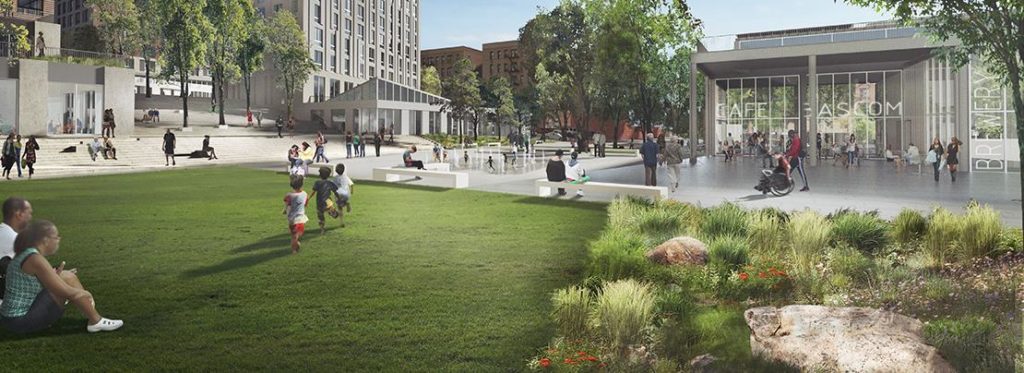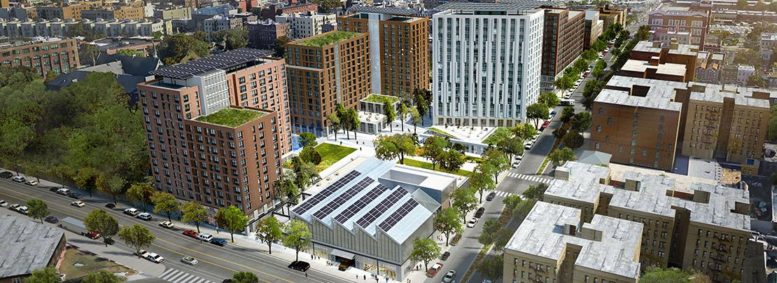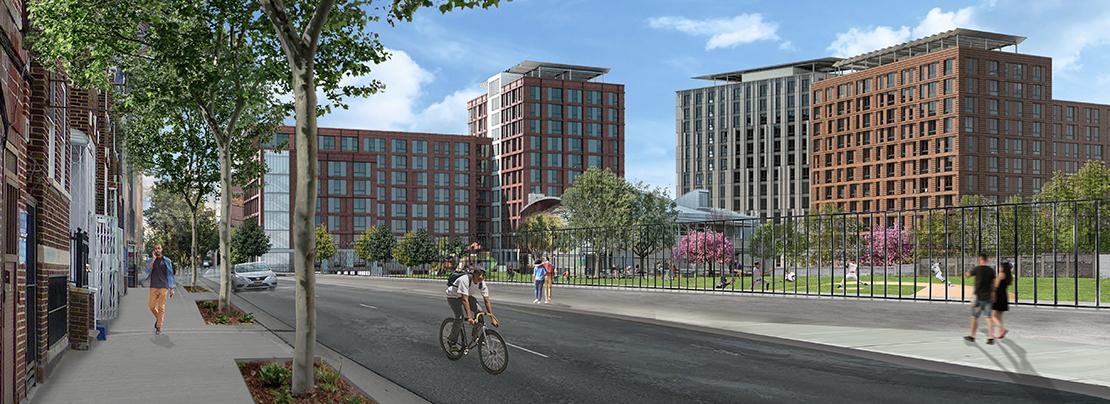Following a crucial vote by The New York City Council Committee on Land Use, a massive redevelopment proposal for the long-vacant Spofford Juvenile Detention Center in the the South Bronx will officially move forward. The project is expected to have transformative effects on the surrounding Hunts Point neighborhood, and is the latest component of the city’s multi-billion dollar initiative to rejuvenate the South Bronx.

Spofford Plaza’s new parks
Dubbed “The Peninsula,” the development will incorporate no portion of the former detention center, but will instead introduce a new 840,000 square foot mixed-use complex comprised of 100% affordable housing, totaling 740 units. The Peninsula will also include 52,000 square feet of recreational and outdoor area, the expansion of a community educational facility, 48,000 square feet of small business incubator and co-working space, an 18,000 square foot health and wellness center, 21,000 square feet of ground-floor retail, and 49,000 square feet of light industrial space.
The estimated project cost is pegged at $300 million with WXY + Architecture + Urban Design and Body Lawson Associates at the helm for building and landscape design.
The joint proposal to redevelop the Spofford Juvenile Detention Center was introduced by Gilbane Development Company, the Hudson Companies, and the Mutual Housing Association of New York (MHANY) in October 2016.

Phase IA complete by end of 2019; Phase IB complete Q1 2021; Phase II complete Q1 2022; Phase III complete Q2 2024
Construction is expected to kick off this spring, and will unfold in three phases staggered between 2019 and 2024. Over the course of the site’s development, the project will support over 1,600 construction jobs, and will create nearly 200 permanent positions when fully complete.
Subscribe to YIMBY’s daily e-mail
Follow YIMBYgram for real-time photo updates
Like YIMBY on Facebook
Follow YIMBY’s Twitter for the latest in YIMBYnews







Please pardon me for using your space: Quality of life also quantity of comfortable living. (Good)
When are they going to do low income housing like nycha
The city is going to let the NYCHA buildings fall apart so they can be redeveloped. Generally it’s better to directly subsidize incomes for low-income individuals than create ghettos.